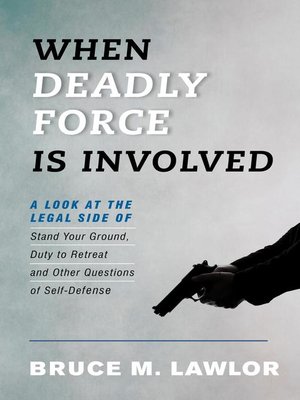When Deadly Force Is Involved
ebook ∣ A Look at the Legal Side of Stand Your Ground, Duty to Retreat and Other Questions of Self-Defense
By Bruce M. Lawlor

Sign up to save your library
With an OverDrive account, you can save your favorite libraries for at-a-glance information about availability. Find out more about OverDrive accounts.
Find this title in Libby, the library reading app by OverDrive.



Search for a digital library with this title
Title found at these libraries:
| Loading... |
Self-defense, as a legal concept, is easy to describe but difficult to apply. Generally, a person who is without fault may use reasonable force or defensive force for the purpose of defending one's own life or the lives of others, including, in certain circumstances, the use of deadly force, provided there is no reasonable alternative to avoid it. When someone begins to parse the words of this description, however, he or she runs immediately into a maze of self-defense laws that appear to be at odds with each other.
Bruce Lawlor clears up the confusion by identifying the major issues that surface in most self-defense cases and by describing how the law has dealt with them historically. Its purpose is not to provide legal advice, but to illuminate the path that must be taken to decide whether a claim of self-defense is valid. It examines a variety of issues, including the duty to retreat and stand-your ground laws, what is a deadly threat, when is fear of mortal danger reasonable, and even what happens when a person mistakenly shoots some in self-defense.
When Deadly Force Is Involved: A Look at the Legal Side of Stand Your Ground, Duty to Retreat and Other Questions of Self-Defense brings a bit of order to the confusion behind self-defense.
Bruce Lawlor clears up the confusion by identifying the major issues that surface in most self-defense cases and by describing how the law has dealt with them historically. Its purpose is not to provide legal advice, but to illuminate the path that must be taken to decide whether a claim of self-defense is valid. It examines a variety of issues, including the duty to retreat and stand-your ground laws, what is a deadly threat, when is fear of mortal danger reasonable, and even what happens when a person mistakenly shoots some in self-defense.
When Deadly Force Is Involved: A Look at the Legal Side of Stand Your Ground, Duty to Retreat and Other Questions of Self-Defense brings a bit of order to the confusion behind self-defense.






